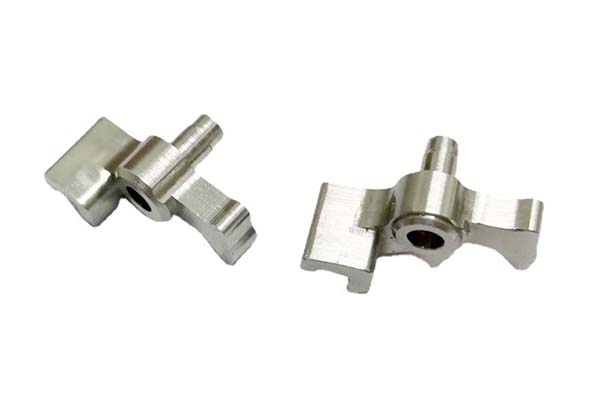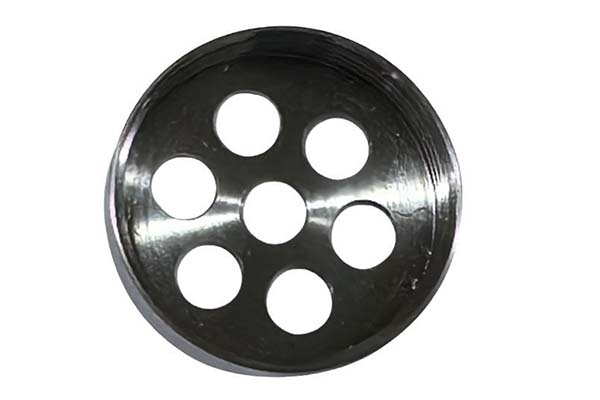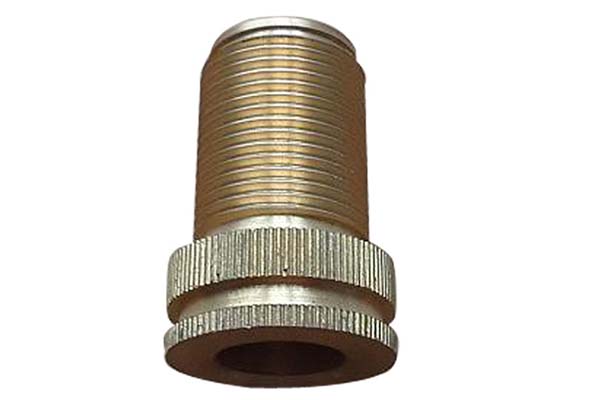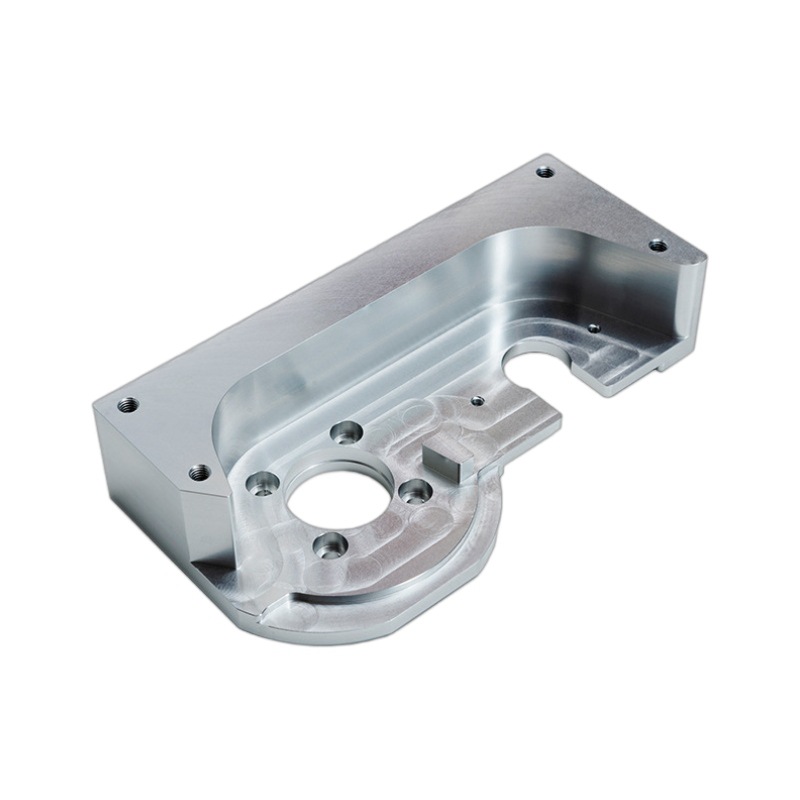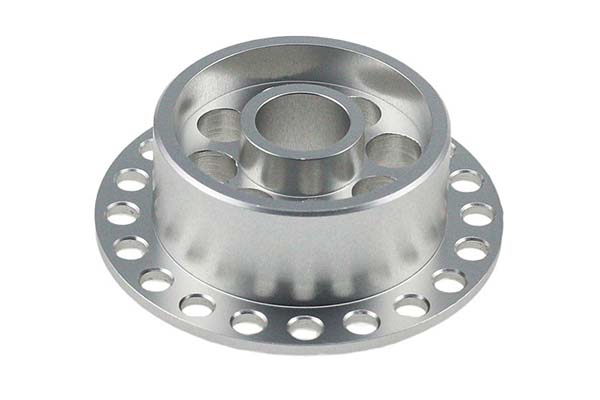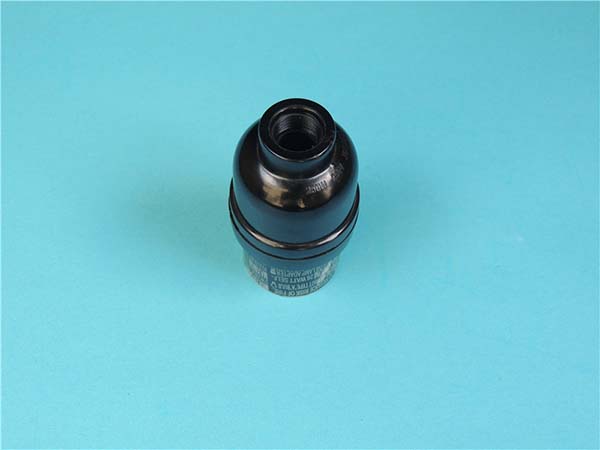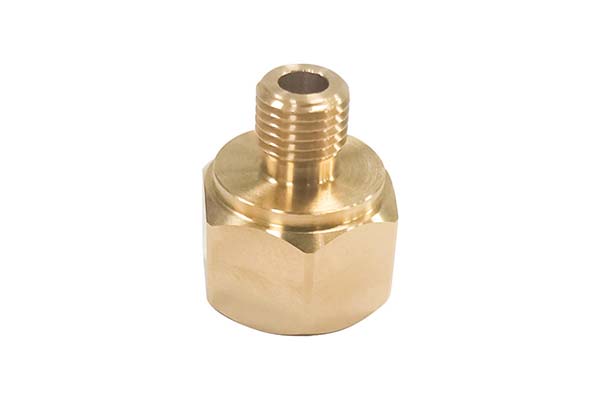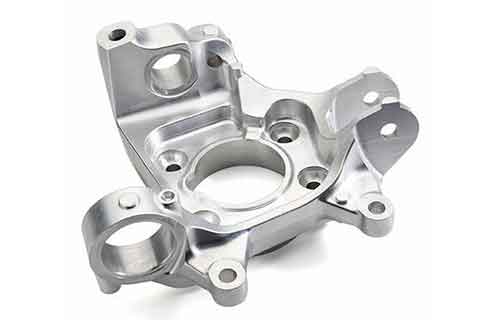Manufacturers requiring superior corrosion resistance often turn to SS316 stainless steel and its low-carbon variant SS316L stainless steel. As austenitic stainless steel grades, they excel in harsh environments, but machining them presents unique challenges. Their molybdenum content enhances pitting resistance but increases cutting forces, leading to rapid tool wear. Additionally, their high ductility causes significant work hardening, and distinguishing between SS316 and SS316L—especially in welding applications—demands clear material knowledge. This guide addresses these pain points, offering proven strategies to optimize CNC machining SS316/SS316L for efficiency, quality, and long-term performance in corrosive environments.
Material Overview of SS316/SS316L
SS316 stainless steel and SS316L stainless steel are austenitic alloys celebrated for their corrosion resistance, with subtle differences that impact application suitability:
- Mechanical properties: Both offer a tensile strength of 515 MPa, yield strength of 205 MPa, and hardness of 18-22 HRC in the annealed state, providing reliable strength for demanding applications.
- Corrosion resistance: Superior to SS304, thanks to 2-3% molybdenum, which enhances pitting resistance in chloride-rich environments (e.g., saltwater, brines). SS316L offers slightly better resistance to intergranular corrosion after welding.
- High-temperature performance: Maintains strength and oxidation resistance at temperatures up to 870°C, making them suitable for high-heat, corrosive environments.
- Workability: Moderate machinability, with a tendency to work harden rapidly—requiring sharp tools and controlled cutting parameters. SS316L’s low carbon content (≤0.03%) marginally improves weldability but has minimal impact on machinability.
- Chemical composition:
- SS316: 16-18% chromium, 10-14% nickel, 2-3% molybdenum, 0.08% maximum carbon.
- SS316L: 16-18% chromium, 10-14% nickel, 2-3% molybdenum, 0.03% maximum carbon.
- Non-magnetic properties: Both are non-magnetic in the annealed state, though cold working can induce slight magnetism.
- Weldability: Excellent, with SS316L preferred for heavy-gauge or multi-pass welds to avoid carbide precipitation and intergranular corrosion.
These properties make SS316/SS316L ideal for marine, chemical, and medical applications where corrosion resistance is critical.
CNC Machining Processes for SS316/SS316L
Core Machining Operations
CNC machining SS316/SS316L requires precision to manage work hardening and cutting forces, but optimized processes yield consistent results:
- CNC milling: Effective for complex geometries like chemical reactor components. Climb milling is preferred to reduce work hardening by minimizing tool contact with already machined surfaces.
- CNC turning: Suitable for cylindrical parts such as marine shafts, with slower feed rates recommended to prevent excessive heat buildup and work hardening.
- CNC drilling and CNC boring: Require sharp tools and high coolant pressure to manage chip evacuation—critical for avoiding work hardening in deep holes, common in oil and gas components.
- Machining centers and multi-axis machining: Enhance efficiency for complex parts, ensuring dimensional consistency across features like flanges and valve bodies.
- Laser cutting: Useful for thin sheets (≤6 mm) used in marine ducting, though CNC machining remains superior for tight-tolerance features.
Optimal Cutting Parameters
| Operation | Cutting Speed (m/min) | Feed Rate (mm/rev) | Depth of Cut (mm) |
| CNC milling (carbide) | 80-160 | 0.1-0.2 | 1-3 |
| CNC turning (carbide) | 100-200 | 0.12-0.25 | 1.5-4 |
| CNC drilling (carbide) | 70-130 | 0.08-0.15 | 1-2.5 |
These parameters balance material removal rates with work hardening control. SS316 and SS316L have nearly identical machining characteristics, with cutting speeds 10-15% lower than SS304 due to higher molybdenum content.
Tool Selection and Tooling for SS316/SS316L
Choosing the Right Tools
Tool selection for CNC machining SS316/SS316L focuses on reducing work hardening and maximizing wear resistance:
- Cutting tools: Carbide tools are preferred over high-speed steel due to their superior heat resistance. Fine-grain carbide (WC-Co with 6-8% Co) offers the best balance of toughness and wear resistance.
- Tool coatings: AlTiN coatings extend tool life by 40-60% compared to uncoated carbide, thanks to their high-temperature stability and reduced friction. TiAlN coatings are a cost-effective alternative for moderate speeds.
- Tool geometry: Positive rake angles (5-10°) reduce cutting forces, while sharp edges for cutting minimize work hardening. Round inserts with large radii are ideal for roughing, while square inserts with honed edges work well for finishing.
- Tool holders: Rigid, shrink-fit holders minimize tool deflection, critical for maintaining tolerances in high-force cutting—common in machining thick-walled chemical processing components.
- Coolant delivery systems: High-pressure coolant (50-100 bar) delivered through the tool improves chip evacuation and reduces heat buildup, preventing tool overheating and work hardening.
Chip Control Strategies
Poor chip control exacerbates work hardening in SS316/SS316L. Effective strategies include:
- Using tools with aggressive chip breakers, especially for turning operations on thick sections.
- Adjusting feed rates to promote short, curly chips (avoiding stringy chips that wrap around tools and cause heat buildup).
- Implementing chip conveyors with high-speed removal to prevent re-cutting chips, which accelerate work hardening.
Surface Finish and Quality Control
Achieving Desired Surface Characteristics
SS316/SS316L’s surface finish is critical for both corrosion resistance and hygiene, as rough surfaces can trap contaminants and accelerate pitting:
- Surface roughness: Achievable Ra values range from 0.8 μm (finish machining) to 3.2 μm (roughing), with 1.6 μm typical for general-purpose parts. Medical and food applications often require Ra ≤ 0.8 μm to prevent bacterial trapping.
- Surface finish requirements: Marine components may need Ra ≤ 1.6 μm to resist saltwater pitting, while chemical reactor parts require smooth finishes (Ra ≤ 0.8 μm) to minimize fluid friction and buildup.
- Finishing processes: Electrochemical finishing achieves mirror-like finishes (Ra ≤ 0.02 μm) for medical devices, while polishing enhances corrosion resistance by reducing surface defects.
Quality Control Measures
- Inspection methods: Coordinate Measuring Machines (CMM) verify dimensional accuracy, while profilometers measure surface roughness (Ra, Rz). Salt spray testing (per ASTM B117) validates pitting resistance for marine applications.
- Quality control standards: Compliance with ASTM A240 (sheet/plate) and ISO 9001 ensures consistent material properties and machining quality.
- Surface defects to monitor: Built-up edge (BUE) can cause surface tearing, creating sites for pitting. Passivation (a post-machining treatment) helps restore the oxide layer, mitigating these risks.
Heat Treatment and Post-Machining Processes
Heat Treatment for SS316/SS316L
SS316/SS316L typically requires minimal heat treatment, but specific processes enhance machinability and reduce stress:
- Annealing: Heating to 1010-1120°C, followed by water quenching, softens the material (reducing hardness to 18-20 HRC) and improves machinability—especially useful for cold-worked stock.
- Stress relief annealing: Heating to 300-500°C for 1-2 hours reduces residual stresses from machining, preventing distortion in large or complex parts like marine valve bodies.
Post-Machining Processes
- Passivation: A nitric acid or citric acid treatment removes free iron from the surface, enhancing corrosion resistance by 30-50% and ensuring the chromium oxide layer remains intact.
- Electropolishing: Improves surface smoothness and corrosion resistance by removing a thin surface layer, ideal for medical devices and food processing equipment.
- Post-machining cleaning: Ultrasonic cleaning removes coolant residues and chips, preventing contamination that could accelerate pitting in chloride environments.
Applications of SS316/SS316L Machined Parts
SS316/SS316L’s unique combination of corrosion resistance and versatility makes them indispensable in demanding industries:
- Marine applications: Propellers, shafts, and hull fittings—resisting saltwater corrosion better than SS304, with a service life 2-3x longer in coastal environments.
- Chemical processing equipment: Reactors, valves, and piping handling acids, solvents, and chlorides—withstanding harsh chemicals that would corrode SS304.
- Medical devices: Surgical instruments and implantable components—offering biocompatibility, corrosion resistance to bodily fluids, and ease of sterilization.
- Food processing equipment: Mixers, conveyors, and storage tanks—resisting corrosion from food acids and cleaning agents, while meeting hygiene standards.
- Oil and gas industry: Downhole tools and offshore platforms—withstanding brines and hydrogen sulfide environments.
In medical device manufacturing, for example, SS316L is preferred for implantable parts due to its low carbon content and superior biocompatibility, reducing the risk of tissue rejection.
Technical Specifications and Standards
Adhering to industry standards ensures SS316/SS316L parts meet corrosion resistance requirements:
- ASTM standards: ASTM A240 (sheet/plate), ASTM A276 (bars), and ASTM A312 (pipes) define material properties, including pitting resistance and chemical composition.
- ISO standards: ISO 15510 specifies chemical composition and mechanical properties for austenitic stainless steels, including SS316/SS316L.
- Machining tolerances: Achievable tolerances of ±0.01 mm for small parts and ±0.05 mm for large components, with SS316L offering slightly better dimensional stability due to lower carbon content.
- Quality certifications: Compliance with ISO 9001, FDA (medical/food), and NORSOK M-630 (oil and gas) is common, ensuring suitability for critical applications.
Challenges and Solutions in Machining SS316/SS316L
Overcoming Key Machining Challenges
CNC machining SS316/SS316L presents several challenges, but targeted solutions yield reliable results:
- Work hardening: More pronounced than in SS304 due to molybdenum content. Use sharp tools, high coolant pressure, and moderate cutting speeds to minimize. Avoid re-cutting chips, as this accelerates hardening.
- Tool wear: High cutting forces and heat cause rapid wear. AlTiN-coated carbide tools last 40-60% longer than uncoated tools, offsetting their higher cost in high-volume production.
- Heat generation: Ductility leads to friction-induced heat. High-pressure coolant and intermittent cutting cycles prevent tool overheating and maintain edge integrity.
- Vibration: More common than in free-machining grades. Rigid fixturing and balanced toolholders minimize vibration, preventing poor surface finish and dimensional errors.
- Chip evacuation: Stringy chips can wrap around tools, causing damage. Use chip breakers, high coolant pressure, and frequent tool cleaning to resolve.
Cost and Efficiency Considerations
Balancing Performance and Cost
CNC machining SS316/SS316L is more expensive than machining SS304, but strategic choices optimize efficiency for its specialized applications:
- Machining cost: 20-30% higher than SS304 due to slower cutting speeds, increased tool wear, and higher material cost. This premium is justified by 2-3x longer service life in corrosive environments.
- Tool cost: Carbide tools are essential for high-volume runs; their longer life reduces replacement frequency by 40-60% compared to high-speed steel.
- Production rate: Typical rates of 15-30 parts per hour for small components, 70-80% of SS304’s rate but necessary for achieving superior corrosion resistance.
- Efficiency improvements: High-speed machining centers with rigid frames reduce cycle times by 15-20% by handling SS316/SS316L’s higher cutting forces without deflection.
Comparison with Other Materials
How do SS316/SS316L compare to similar corrosion-resistant materials?
| Material | Corrosion Resistance (Chlorides) | Pitting Resistance | Machinability (Relative) | Cost (Relative) |
| SS316 | Excellent | High | Good (70%) | High |
| SS316L | Excellent | High | Good (75%) | High |
| SS304 | Good | Moderate | Good (85%) | Medium-High |
| SS303 | Good | Moderate | Excellent (100%) | High |
| Titanium Ti-6Al-4V | Superior | Very High | Poor (40%) | Very High |
- SS316/SS316L vs. SS304: SS316/SS316L offer 50-100% better pitting resistance in chloride environments but cost 15-20% more. Choose them for saltwater, chemical, or medical applications; SS304 suffices for mild environments.
- SS316/SS316L vs. SS303: SS316/SS316L provide superior corrosion resistance but poorer machinability. SS303 is better for high-volume, non-corrosive applications; SS316/SS316L for corrosive environments.
- SS316/SS316L vs. titanium: Titanium offers superior strength-to-weight ratio and corrosion resistance but costs 3-5x more, making SS316/SS316L a cost-effective alternative for most marine and chemical applications.
Yigu Technology’s Perspective
At Yigu Technology, we specialize in CNC machining SS316/SS316L for marine, medical, and chemical clients. Our data shows that using AlTiN-coated carbide tools with high-pressure coolant (70 bar) reduces tool wear by 40% compared to standard setups. For welded parts, we recommend SS316L to avoid intergranular corrosion, verifying carbon content with material certificates. Our quality control includes 100% CMM inspection and salt spray testing (ASTM B117), ensuring parts meet corrosion resistance requirements for long-term performance in harsh environments.
FAQ
- What’s the key difference between SS316 and SS316L?
SS316L has low carbon content (0.03% max vs. 0.08% for SS316), preventing carbide precipitation during welding—critical for avoiding intergranular corrosion in welded parts exposed to corrosive environments.
- Why is SS316/SS316L preferred for marine applications?
Their molybdenum content enhances pitting resistance in saltwater, reducing corrosion rates by 50-70% compared to SS304 and extending service life in coastal or offshore environments.
- How does machining SS316 compare to SS304?
SS316 is 10-15% harder to machine than SS304 due to molybdenum, requiring slower cutting speeds, more durable tools (e.g., AlTiN-coated carbide), and higher coolant pressure to manage work hardening and tool wear.
